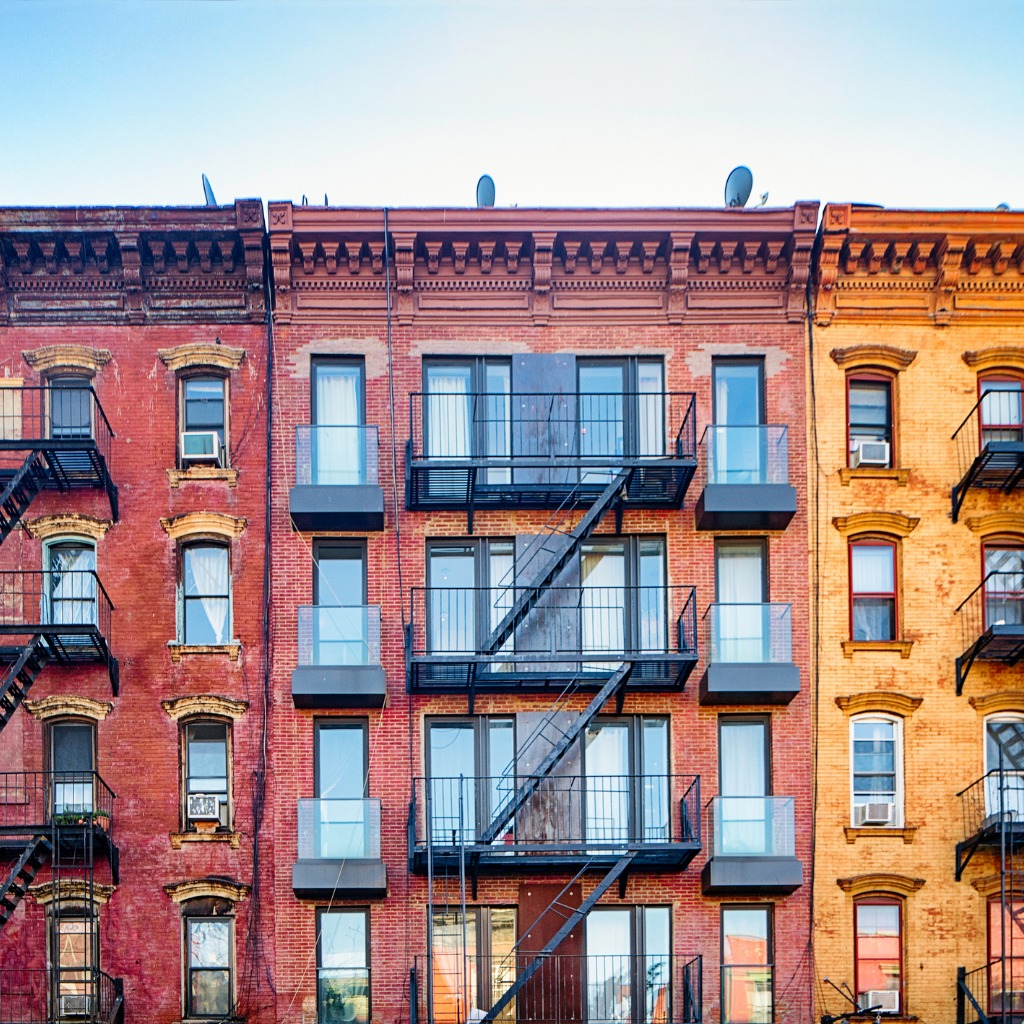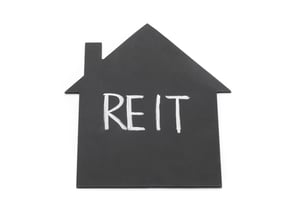The coronavirus pandemic left many Americans unable to pay their rent, as losing their jobs meant losing the ability to make ends meet. To better understand how the economic impact of the coronavirus affected households paying rent, Roofstock analyzed data from the U.S. Census Household Pulse Survey that tracked how many households are caught up with their rental payments in 15 populous metro areas.
Roofstock compared data collected between June 9 and June 21, 2021—the most recent available—and data collected between April 23 and May 5, 2020. Roofstock also calculated the percent of households that lost income and fell behind on rent and the percent of unemployed residents who fell behind on payments.
States have initiated an array of rent relief programs earmarking federal funds to help pay off overdue rents back to the start of the pandemic in March 2020. But even with this relief, as of early summer 2021, some 3.2 million people across the country said they were facing possible eviction within two months, according to the U.S. Census Bureau findings.
The drop in rents appears to be ending, and housing costs are heading back up. Nationwide, rents are rising faster than they were in the days before the coronavirus, and they are regaining their losses in most U.S. cities.
Photography by Ace // Shutterstock
Atlanta
- Households that report falling behind on rental payments: 11.6% (#11 highest, 4.3% less than in 2020)
- Households with lost income that fell behind on rent: 30.2% (#5 highest, 7.7% greater than in 2020)
- Unemployed respondents who fell behind on rent: 12.1% (#14 highest, 11% less than in 2020)
Rents in the Atlanta area soared during the pandemic, rising more than 12% in one city neighborhood, and in the nearby suburbs, rents rose in the range of 13% to 16%. In some downtown and city neighborhoods that relied on office worker demand, rents slid just a bit, down 1% to 3%.
Fulton County, where Atlanta is located, received $18 million in federal funds for rental assistance. The state launched a $552 million program in the spring of 2021, also using federal funds, to help eligible renters. While moratoriums helped keep many people from losing their homes, one 2021 study from the Federal Reserve Bank of Atlanta found that during a one-year period of the pandemic, about 60,000 eviction notices were filed in the five counties that make up the greater Atlanta metropolitan area.
Shortages of affordable housing in Atlanta is a key topic being discussed by the city's mayoral candidates, whose ideas range from working with developers to partnering with the Atlanta Housing Authority. As Atlanta is the fourth fastest-growing metro in the country, the demand for housing is expected to continue to rise.
DID YOU KNOW...
Buying rental property has become more popular than ever, but maybe people don't even know where to start. Learn how to buy your first rental property in this guide.
Jorge Salcedo // Shutterstock
Boston
- Households that report falling behind on rental payments: 9.1% (#15 highest, 4.9% less than in 2020)
- Households with lost income that fell behind on rent: 19.6% (#12 highest, 2.3% less than in 2020)
- Unemployed respondents who fell behind on rent: 17.1% (#8 highest, 5% less than in 2020)
Rents in Boston dropped dramatically in 2020, off 18% as the tens of thousands of students who typically fill its apartments to attend the city’s many colleges and universities failed to arrive due to the coronavirus. But Boston’s resident renters, particularly immigrants and less affluent tenants, already were coping with one of the most expensive housing markets in the country.
According to a 2020 Evictions in Boston report, nearly 15 evictions were filed per day during the past decade, with those evictions much more likely to affect marginalized communities and immigrants in Boston, according to findings from a joint study published in 2020 by the Massachusetts Institute of Technology in collaboration with City Life/Vida Urbana.
In 2017, nearly half of Boston’s rental housing failed to meet the federal definition of affordability, which requires that a household spend no more than 30% of its income on rent and utilities. Massachusetts enacted a COVID-19 Eviction Diversion Initiative at the end of 2020 with $171 million for aid to tenants and landlords
Mayoral candidates for Boston have been sharing their thoughts for how to solve the lack affordable housing in the area. Some have suggested converting large rental units into ones with fewer bedrooms and offering tax incentives for the development of affordable housing.
James Andrews1 // Shutterstock
Chicago
- Households that report falling behind on rental payments: 12.4% (#7 highest, 4.8% less than in 2020)
- Households with lost income that fell behind on rent: 24.5% (#9 highest, 3.1% greater than in 2020)
- Unemployed respondents who fell behind on rent: 15.8% (#9 highest, 7.3% less than in 2020)
In Chicago, the median monthly rent for studio, one-, and two-bedroom apartments in May 2021 was off less than 2% from a year earlier, a far smaller decline than in many other U.S. cities. Counties in metropolitan Chicago issued moratoriums to forbid landlords from filing legal action to evict tenants for overdue rent.
Elsewhere in the state, counties permitted eviction filings but tended not to act on those related to the coronavirus. State plans called for providing $1.1 billion in relief payments for renters and landlords, allowing individuals to apply for up to $25,000 to be paid directly to landlords. Another program has pledged $280 million to assist with utility bills.
Lawmakers recently passed legislation that includes tax incentives for developers and investors to create affordable housing for renters in generally high-income areas and to put money into affordable units that already exist—allowing more people to live where they work.
Stacie Young, who helped create the incentive program, told the Chicago Tribune: “We’re creating affordability and locking in affordability in higher-cost markets, and we’re encouraging investment in lower-cost markets. And we’re not necessarily taking property value off the table.”
Trong Nguyen // Shutterstock
Dallas
- Households that report falling behind on rental payments: 12.4% (#8 highest, 1.5% less than in 2020)
- Households with lost income that fell behind on rent: 44.4% (#1 highest, 29.1% greater than in 2020)
- Unemployed respondents who fell behind on rent: 15.3% (#12 highest, 1% less than in 2020)
Rents dropped in Dallas during the pandemic, but lately are making a robust rebound. Factors driving rents higher include the thousands of people moving to Texas from out of state, a shortage of homes to buy, and high construction costs.
Renters in the city can seek help from a program set up with $18 million in federal funds. The program offers up to 12 months rent, with a monthly maximum of $1,500, spanning March 2020 to December 2021. To be eligible, tenants must have 80% or less of the local median income, which is about $62,000 for a family of three.
RELATED
With the rise of remote work allowing people to work from anywhere, check out this list of the cheapest states to buy a house in 2021.
Studio Specialty // Shutterstock
Detroit
- Households that report falling behind on rental payments: 13.3% (#5 highest, 1.9% less than in 2020)
- Households with lost income that fell behind on rent: 33.7% (#4 highest, 14.6% greater than in 2020)
- Unemployed respondents who fell behind on rent: 15.6% (#10 highest, 0.4% less than in 2020)
Detroit's downtown vacancy rate in the last quarter of 2020 was 16%, twice as high as it was in the year’s first quarter. Overall rents downtown dropped as well. For tenants struggling to make ends meet, the state in June passed a funding measure that includes $378 million in grant money for rental assistance. Eligible renters must live at 80% or below the area’s median income. Other money was allotted to emergency rental assistance.
Gov. Gretchen Whitmer on July 27 announced plans to use $100 million in federal funding from President Joe Biden’s American Rescue Plan to add more affordable housing throughout Michigan, including Detroit.
Trong Nguyen // Shutterstock
Houston
- Households that report falling behind on rental payments: 20.4% (#2 highest, 1.6% greater than in 2020)
- Households with lost income that fell behind on rent: 37.1% (#2 highest, 9.8% greater than in 2020)
- Unemployed respondents who fell behind on rent: 24.9% (#3 highest, 3.6% less than in 2020)
Many renters in Houston were struggling financially before the pandemic, when eviction rates in 2019 were already rising more than 4%. Rents in 2019 were 40% to 50% higher than in the previous year. While the federal moratorium on evictions helped some residents stay in their homes, there were no local protections enacted in Houston. Harris County, which encompasses Houston, has had more than 30,000 eviction cases filed since the start of the pandemic in March 2020.
From 2000 to 2010, Houston, along with the Dallas-Fort Worth metro, experienced the largest population boom of any other metro in the U.S., leading to a high demand for housing that is likely to continue.
Michael Moloney // Shutterstock
Los Angeles
- Households that report falling behind on rental payments: 12% (#9 highest, 0.2% less than in 2020)
- Households with lost income that fell behind on rent: 16.5% (#14 highest, 0.3% greater than in 2020)
- Unemployed respondents who fell behind on rent: 11.6% (#15 highest, 5.3% less than in 2020)
More than 1 million renting households in Los Angeles qualified as low income before the pandemic, according to the federal Department of Housing and Urban Development. Other research estimates that Los Angeles County renters owe almost $1 billion in back rent due to the pandemic.
California lawmakers in July extended moratoriums on evictions, protecting tenants who can pay at least 25% of their monthly rent through September. The state also doubled the amount of funding available for rent relief to $5.2 billion.
hbpictures // Shutterstock
Miami
- Households that report falling behind on rental payments: 11.2% (#12 highest, 10.7% less than in 2020)
- Households with lost income that fell behind on rent: 12.1% (#15 highest, 15.3% less than in 2020)
- Unemployed respondents who fell behind on rent: 20.3% (#5 highest, 0.9% less than in 2020)
Miami-Dade County earmarked $60 million early in 2021 to help tenants about to lose their homes. At the time, moratoriums were set to expire and as many as 7,000 eviction cases were pending.
Under a county program, assistance can cover full repayment of rent overdue since March 2020, with a maximum of $3,000 a month, to landlords who agreed to allow tenants to stay in their homes. Almost 1,600 local families from March to June of 2021 got an average of $7,500 apiece in such assistance, totaling nearly $12 million in county expenditure of funds.
Ryan DeBerardinis // Shutterstock
New York
- Households that report falling behind on rental payments: 20% (#3 highest, 1.5% less than in 2020)
- Households with lost income that fell behind on rent: 27.4% (#7 highest, 4.9% greater than in 2020)
- Unemployed respondents who fell behind on rent: 26.9% (#2 highest, 1.5% less than in 2020)
A year into the pandemic, the unpaid rent in New York City totaled $1 billion. Despite moratoriums in place to keep struggling tenants in their homes, landlords were filing plenty of eviction notices, especially in poor and ethnic neighborhoods.
ABC 7 in New York City found the rate of eviction notices was at least twice as high in Latino and Black neighborhoods than it was in mostly white neighborhoods between March 2020 and February 2021. Also, notices were filed at least five times more frequently in the poorest sections compared with the city’s most affluent addresses. Landlords said they, too, struggled to pay their bills and mortgages without rental income.
The Cuomo administration recently launched a new application process for tenants to seek access to the budgeted $2.7 billion in state and federal rental assistance. Additionally, residential real estate in Manhattan returned to normal levels during the spring.
Spiroview Inc // Shutterstock
Philadelphia
- Households that report falling behind on rental payments: 10.6% (#13 highest, 1.2% less than in 2020)
- Households with lost income that fell behind on rent: 24.2% (#10 highest, 7.9% greater than in 2020)
- Unemployed respondents who fell behind on rent: 17.2% (#7 highest, 1.9% greater than in 2020)
In Philadelphia, the number of tenants unable to pay their rent rose dramatically during the pandemic according to research by the University of Pennsylvania Housing Initiative. Overall, more than 60% of landlords said they had been affected by tenants unable to pay their rent. During the early months of the city’s rent relief program during the pandemic, about a quarter of the people who applied worked in the hard-hit service sector. Other research has shown that although Philadelphia’s rents are comparatively low, roughly half of renters already were considered “cost-burdened,” well before the pandemic hit. The cost-burden measure means that a household spends 30% or more of its income on housing costs, including rent and utilities.
Support for extending eviction protections persists in the city, with landlords given more opportunities to apply for assistance when tenants are unable to pay rent. This will give both tenants and landlords extra protection from the city as the economy continues to fluctuate. Some regions in the city will be built up, including North Philadelphia.This project is hoped to bring in more construction jobs to the area as well.
Sean Pavone // Shutterstock
Phoenix
- Households that report falling behind on rental payments: 21.7% (#1 highest, 9.4% greater than in 2020)
- Households with lost income that fell behind on rent: 29.2% (#6 highest, 10.5% greater than in 2020)
- Unemployed respondents who fell behind on rent: 29.5% (#1 highest, 15.7% greater than in 2020)
Thousands of households in Phoenix have struggled to pay their rent during the pandemic. Despite moratoriums, landlords in the metro area filed nearly 30,000 eviction notices from March 2020 to the end of February 2021. This was particularly true of owners of apartment complexes in lower-income neighborhoods.
One landlord with two affordable apartment complexes filed for more than 600 rental evictions. Also, almost 3,000 local tenants were the subject of more than one eviction filing during that time period. Residents of the Phoenix area already were more than twice as likely than average Americans nationwide to lose a home to eviction or foreclosure before the pandemic.
Despite these downturns, the city has attempted to bounce back from COVID-19. Phoenix is one of the top cities for investing and developing multi-family properties, with Atlanta; Georgia; and Charlotte, North Carolina, following right afterward. The housing market continues to boom in the city, and more build-to-rent communities are popping up in South Phoenix.
Matt Gush // Shutterstock
Riverside, California
- Households that report falling behind on rental payments: 11.9% (#10 highest, 0.2% less than in 2020)
- Households with lost income that fell behind on rent: 17.9% (#13 highest, 0% less than in 2020)
- Unemployed respondents who fell behind on rent: 14.9% (#13 highest, 4.7% less than in 2020)
A United Lift rent relief program has provided almost $38 million in assistance for paying rent and utilities to more than 8,000 households in California’s Riverside County over the past year. From March to May of this year alone, assistance to the area near Palm Springs totaled $12.5 million for more than 1,600 households. The funding is available to eligible tenants to cover as much as 12 months of past-due rent back to March 2020, up to three months of future rent, and past-due utility bills.
Bertl123 // Shutterstock
San Francisco
- Households that report falling behind on rental payments: 10% (#14 highest, 0.3% less than in 2020)
- Households with lost income that fell behind on rent: 20.5% (#11 highest, 0% less than in 2020)
- Unemployed respondents who fell behind on rent: 20% (#6 highest, 7.1% greater than in 2020)
Estimated unpaid rent in San Francisco hit a sum of $355 million in April 2021, up from $196 million in September 2020, according to county and city government data. About 25,000 households owe rent debt.
Nearly 90% applications to the city’s rent relief program reported a loss of income due to the coronavirus. Even more reported having incomes of 30% or less of the area’s median of $28,000 for a single-person household. During the pandemic, rents in the generally expensive San Francisco market dropped more than 26% from March 2020 to January 2021. However, they are now showing a robust rise, up about 20%.
Moving forward, San Francisco will see more affordable housing development, with a new 100% affordable housing development just completed in the Mission District. The Sunset District is expected to see development as a new budget for affordable housing passed the the Board of Supervisors Budget and Finance Committee.
Artazum // Shutterstock
Seattle
- Households that report falling behind on rental payments: 13.2% (#6 highest, 9% greater than in 2020)
- Households with lost income that fell behind on rent: 27.3% (#8 highest, 21.3% greater than in 2020)
- Unemployed respondents who fell behind on rent: 15.6% (#11 highest, 11.1% greater than in 2020)
In early 2021, rents in Seattle edged higher for the first time since the pandemic began. The rent decreases during the worst of the coronavirus, however, were dramatically split between the least and most costly units and areas. Rents dropped for luxury apartments, with many of these complexes offering concessions to attract renters. Among the most affordable units, however, many prices stayed flat or even increased in some neighborhoods.
Homelessness remains the top issue of voters’ minds in the city, according to a recent survey from the Washington Research Group. Given the demand from voters, this will likely be a top priority for mayoral candidates this year. Legislation was also unanimously approved in July for more affordable housing in South Park.
Sergey Novikov // Shutterstock
Washington D.C.
- Households that report falling behind on rental payments: 17.4% (#4 highest, 6.4% greater than in 2020)
- Households with lost income that fell behind on rent: 35.9% (#3 highest, 18.3% greater than in 2020)
- Unemployed respondents who fell behind on rent: 24.6% (#4 highest, 7.2% greater than in 2020)
While rents in the D.C. area dipped by about 10% in the pandemic year for low- and moderate-income apartments, about a quarter of the nearly 900,000 rental households in the area face the possibility of eviction this summer.
The nation’s capital launched a program in April 2021 for tenants struggling to pay their rent or utilities because of the pandemic. STAY D.C., which stands for Stronger Together By Assisting You, opened with $352 million in federal funds and had distributed about $19 million as of late June. At least $130 million of the funds must be doled out by the end of September or be forfeited, returned, and distributed to other locales. The program offers aid for up to 18 months, with money for unpaid rent dating back to April 2020 and up to three months in upcoming rent.









